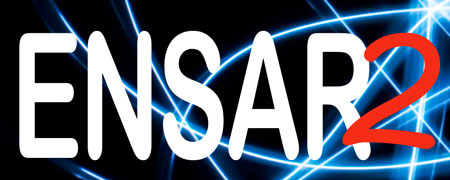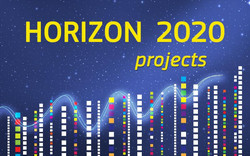Task2 Phoswich assemblies. IEM-CSIC
The experiments at the radioactive ion facilities, require innovative detectors systems, including very efficient gamma-ray arrays or calorimeters, which can be used for the simultaneous detection of high-energy photons with relatively good energy and timing resolution, and multiplicity and sum energy of low-energy gamma transitions. In addition, the discrimination or measurement of energetic charged particles is important. For experiments where the source of gamma rays is moving, as is the case for most of the planned experiments, a relatively good determination of the first interaction position in the scintillator is needed, in order to make the Doppler correction of the gamma-ray energies. One can achieve such a goal by using novel scintillating materials (see WP2) and by adopting gamma-ray tracking methods. All of this requires implementation of segmentation of the calorimeters both in the tangential (x,y) and radial (z) directions or other means to determine interaction positions in 3D. The objective of this Work Package is to investigate and develop such segmented gamma detection arrays. Preparatory work for this subject has been already carried out within the two projects of innovative calorimeters CALIFA and PARIS. The tangential segmentation can be achieved by segmented packing of different crystals together. The radial segmentation will be performed using 2 (or more) layers of scintillators, either mechanically separated, or by adopting the “Phoswich” concept, where 2 crystals with different wave length of the light are glued together, while the composite signal read by common photo sensors is deconvoluted using the pulse shape analysis algorithms. The Phoswich approach in order to simultaneously detect charged particles of high energy and gamma rays has successfully been investigated within the GANAS project. This concept allows to reduce the crystal sizes and to obtain information that a single crystal cannot supply. In order to build Phoswich scintillators the two (or more) materials have to be optically compatible. The new materials that became available recently should be investigated for possible use in Phoswich configurations. Moreover, it should be investigated to combine segmented and non-segmented crystals. As the scintillation light from the new materials could range from yellow to blue they might require to be coupled to new high performing photo-sensors (SDD, SiPM, SBA-UBA-PMT ). To get spectroscopic quality data from these new combinations the respectively optimized readout electronics has to be tested in dedicated experiments. In collaboration with WP4 the individual features of different combinations have to be investigated to allow for optimized use in different applications. Due to the fast emission e.g. in LaBr3:Ce the only way to reduce the amount of data is a digital pre-processing of the data already in the frontend. Modern systems are typically based on large field programmable gate arrays using complex algorithms for the parallel processing of those huge data streams. Optimized Algorithms have to be implemented to allow for a sufficient performance and through put that is only possible in a close collaboration of experimentalists and electronics developers.



